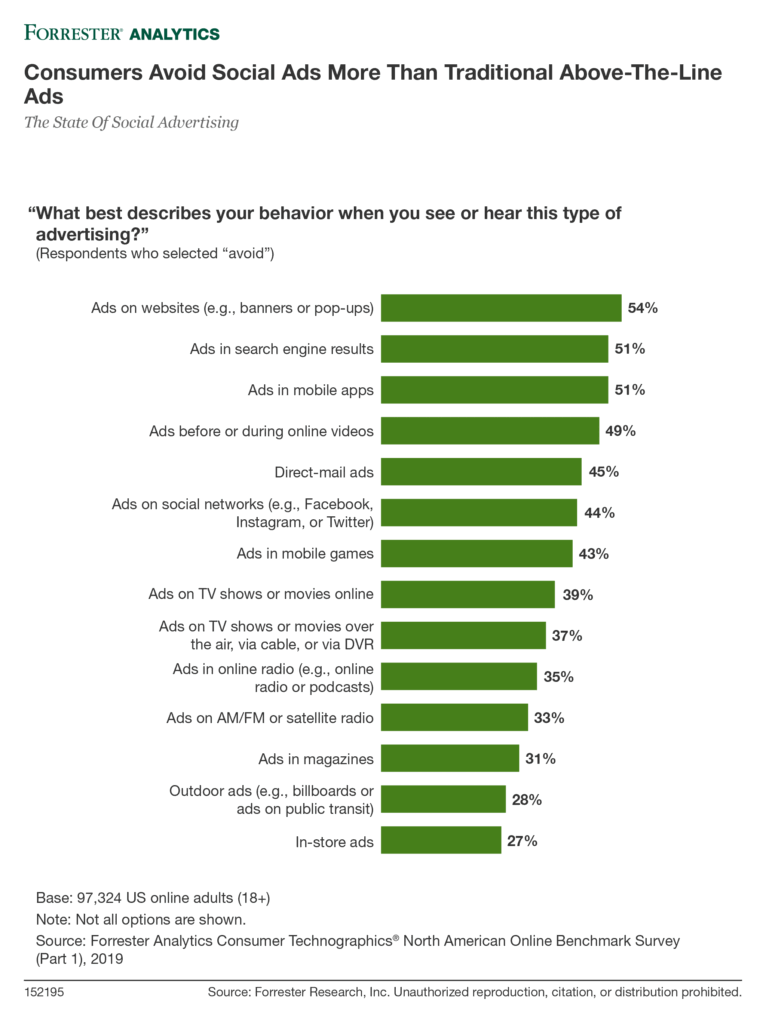The State Of Social Advertising: Pretty On The Outside, Ugly On The Inside
On the outside: Social media’s total global advertising spend is expected to balloon to $110 billion by 2022 (with Facebook taking 75% of the global spend market). Social networks are happy. Investors see dollar signs. Marketers feel justified in their spending.
On the inside: Social media’s underbelly conveys a picture of turmoil. Consumers can’t quit social networks but dislike social ads and distrust how social networks handle their personal data; 44% of consumers avoid ads on social networks (see figure), and they rank social networks third-lowest in trustworthiness to keep their data safe (after media companies and home telecom service providers). Advertisers invest more in social ads, overlooking price uncertainty and increased privacy constraints; total global social ad spend is expected to balloon to $110 billion by 2022. Technology providers pile on ad formats like video ads and shopable ads, contributing to overstuffed interfaces.

What it means: Social advertising is already exhibiting cracks in the facade, which means change on the horizon. Younger consumers use social media in increasingly harder-to-monetize ways with private and ephemeral experiences. Advertisers are starting to experience the pain of diminished ad targeting options. And tech companies’ own talent is revolting and holding their own employers accountable, a la Google. This all adds up to: Social advertising will move away from its famous hypertargeting capabilities and toward a traditional media publisher model of contextual targeting, because consumer privacy regulation will force social networks to change how they use data to target ads to consumers. Instead of finding left-handed mothers in Chicago, social networks will target in more broad strokes. Effectively, what’s old is new again.
Read Brandon Verblow’s and my full report here: “The State Of Social Advertising: Rapid Growth Belies Consumer, Advertiser, And Technology Conflicts.”
